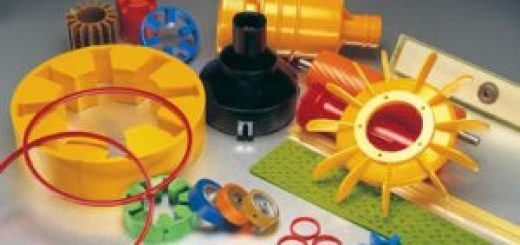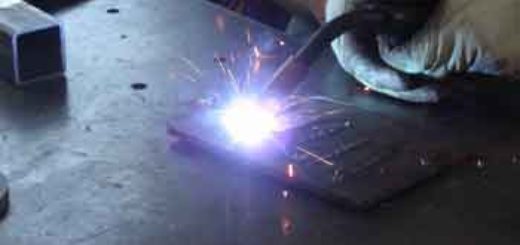Bulk diesel and fuel oil transfer pumps uses, features, types, advantages and disadvantages
Bulk fuel transfer pump is a very general term, and covers any application where fuels, oils and diesel are handled, The typical use of the fuel oil pump includes the bulk transfer of the fuel from one receptacle to another, whether this is a drum, IBC or storage tank, They can be used to directly fuel the vehicle, machine or generator and may be part of a larger fuel oil transfer pump system or skid, complete with hose reel, valves and meters.
Fuel transfer pumps
Fuel Pumps can move fuel, such as diesel, petrol or another type of fuel, from one place to another, from one storage container into another or, more frequently, from a storage container into a vehicle via the dispensing nozzle, Many fuel transfer pumps are either mains or battery powered, for larger or heavily used refueling stations, but hand pumps are available and can be a good solution for certain types of use.
Manual, or hand fuel transfer pumps have two great benefits overpowered pumps, they are cheaper to purchase and run, they can be highly cost-effective when dispensing or transferring small amounts of fuel from one container to another or, dispensing fuel from a drum when there is not huge quantity to be moved, they don’t require any power, They can be used anywhere without worrying about a power source or whether batteries are charged.
Fuel transfer pumps require the utilization of the suction pipe that is cut off close to the base of the tank and screws into the pump bay on the base of the pump, They normally incorporate a 3/4″ or 1″ release hose, A large portion of these convenient fuel exchange pumps give flowrates of 10 to 30 GPM, They are the best when it comes to transporting fuel from one compartment to an alternate holder.
They can be utilized to transfer diesel fuel or gasoline in quite a range of machinery ranging from cars, planes, trucks, horticultural ranch apparatus to bulldozers, They are designed for use with non-flammable fluids including antifreeze, hydraulic fluid, non-flammable oil-based solvents and oil-based herbicide carriers.
Fuel transfer pump can exchange exact measures of fluid starting with one holder then onto the next, Some fuel transfer pumps are powered by DC and use siphoning principle, It works by utilizing vacuum weight and hydrostatic weight, it simply implies that a fluid can be exchanged to a holder which is lower than the compartment holding it, DC fuel transfer pump saves you the agony of worrying over the area and weight of fuel you wish to transport.
Types of oil transfer pumps
There are 3 types of oil transfer pumps which are Positive Displacement / Gear Pumps, Centrifugal Pumps and Submersible Turbine Pumps.
Positive Displacement / Gear Pumps
Gear pumps can transfer fuel from bulk tanks to generators, filtration polishing systems, generator tank return flow pumps, and boiler feed pumps, Common Brands are Viking, Blackmer, and Tuthill, Gear pumps have excellent suction characteristics up to about 20 vertical feet, high-pressure output capability to several hundred PSI, very low to high flow capacities from 0.25 to several hundred GPM, relatively constant output through range of pressures, Positive displacement pumps are available in full range of voltages and horsepower.
Suction piping characteristics can make starting and keeping prime a problem, Higher flow rate pumps can be higher in cost, Noise and vibration can be higher than alternatives, Most Common issues such as loss of prime in suction piping, Overpressure of discharge piping if the improper setting of the pressure regulating valves, Debris in pump head if improper strainer.
Centrifugal Pumps
Centrifugal Pumps transfer to and from delivery vehicles to bulk tanks with flooded suction conditions, Common Brands are Gorman Rupp and Gould, Centrifugal Pumps offer high flow rates at relatively low costs, but there are some limitations such as limited suction capabilities, Capacity decreases at higher pressures, and the most common problem is difficulty in self-prime.
Submersible Turbine Pumps
Submersible Turbine Pumps can be used to transfer fuel from underground or aboveground tanks to generator day tanks and boiler feed at limited pressure, Common Brands are Red Jacket and FE Petro, there are no suction or priming issues, there are relatively high flow rates & relatively low costs.
There are some limitations such as pressure limitation of 50 PSI, It is not available as 120 VAC, It is not available for low flow applications, It is not applicable for shallow tanks such as generator base tanks, Headroom required above the tank for installation in buildings, The most common problems are excessive flow rate, Siphon through pump if missing or incorrect anti-siphon.
Types of manual fuel transfer pumps
Manual pumps come in many different mechanisms, the most common are rotary and semi-rotary hand pumps, they work in a very similar way, by turning a handle to move the fuel, Both tend to be very rugged and hard-wearing, the semi-rotary design, which has a simple straight handle, while the rotary handle is mounted at 90 degrees to a crank-shaft, making it slightly easier to turn rapidly.
Another option for manually moving fuel is diaphragm pumps, which could be hand or foot-operated, They benefit from being very light and easy to transport and set up, they are very cost-effective, They tend to be reliable and hard-wearing, although the diaphragm can occasionally require replacement.
Level barrel pumps, whether made of metal or plastic, are another simple and extremely cost-effective solution for mounting to the top of barrels and work by simply raising and lowering a handle, They are suitable for a range of low-viscosity fluids including petrol, and require very little maintenance.
The siphon pump can transfer fuel from any higher container to a lower one using only gravity, the user can prime it by pumping a bit of fuel through first by hand, The kind of pump that is best for you depends on some factors such as the type of liquid you will be transferring, and the containers you will be transferring from and to.
Type of fluid
Different hand pumps will be suitable for different types of fluids, such as diesel, petrol, oil, or water, some plastics may be degraded by petrol but can be safely used by water, or it may be down to the viscosity of the fluid, Even within a particular category, different models may be more suitable for a certain liquid so it is always important to check before you purchase, Others may be suitable for a wide range of fuels, so can be more flexible options.
Type of container
There are types of small containers used with manual pumps, you can use a manual pump with a different type of container, Rotary and semi-rotary pumps, for example, can be placed on almost any kind of container.
Artificial lift pump systems types, uses, advantages & disadvantages




It’s nice to know that fuel transfers can be a cheap way to manage my fuel. I plan to buy a bulk diesel pump soon in order to more easily have my car refueled. The nearest gas pump station where I live is quite far so having a bulk diesel pump would be convenient.